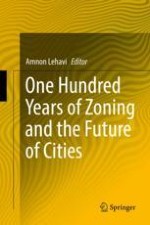2018 | OriginalPaper | Chapter
Rethinking Zoning for People: Utilizing the Concept of the Village
Authors : Kevin M. Leyden, Ph.D., Lorraine Fitzsimons D’Arcy, Ph.D.
Published in: One Hundred Years of Zoning and the Future of Cities
Publisher: Springer International Publishing
Activate our intelligent search to find suitable subject content or patents.
Select sections of text to find matching patents with Artificial Intelligence. powered by
Select sections of text to find additional relevant content using AI-assisted search. powered by
